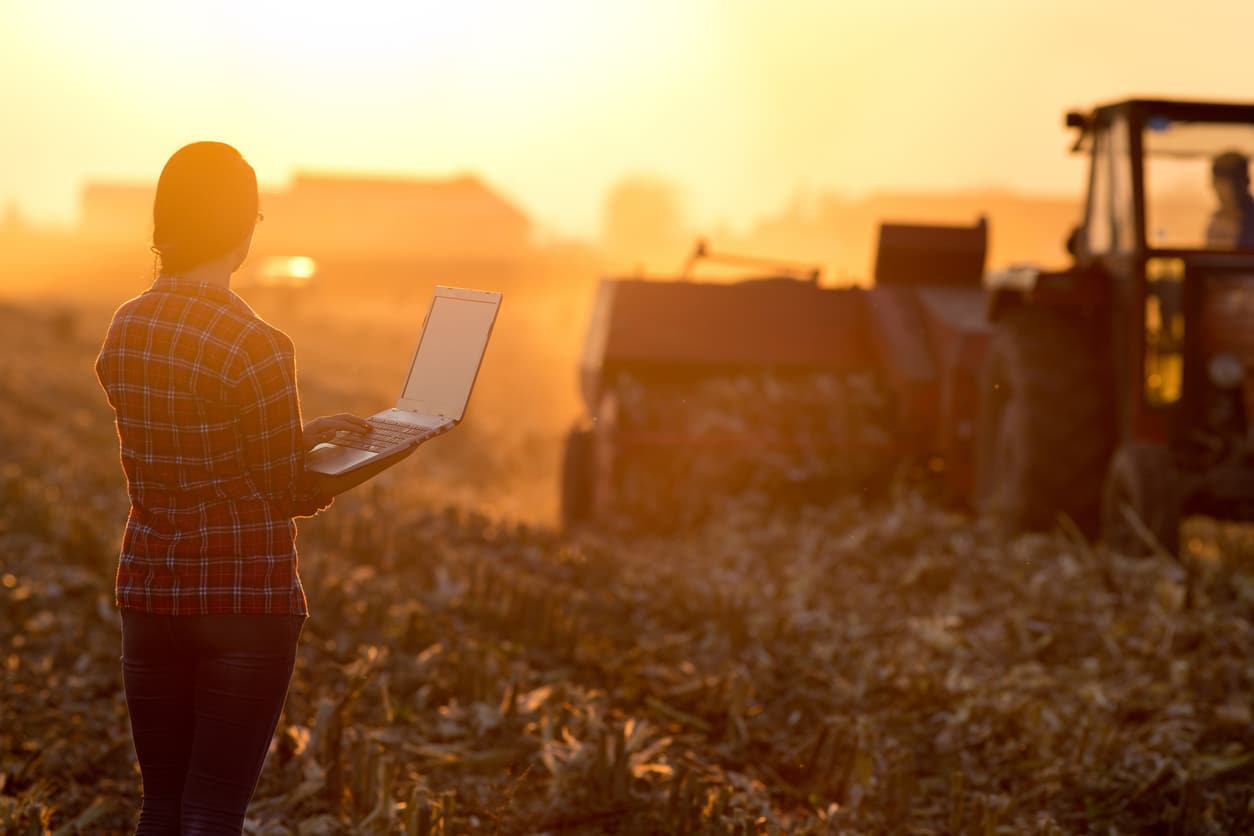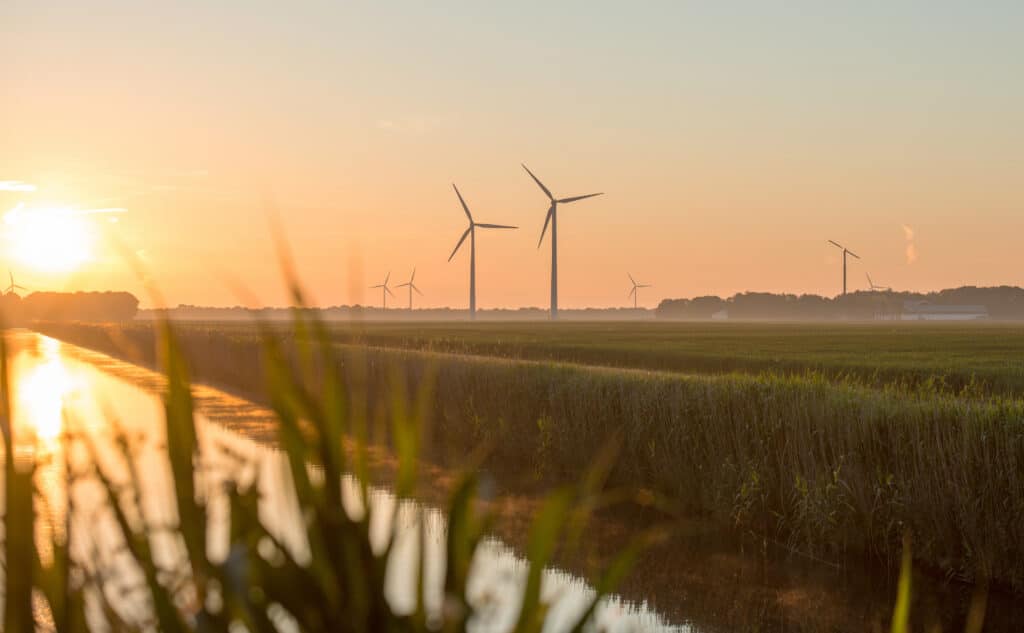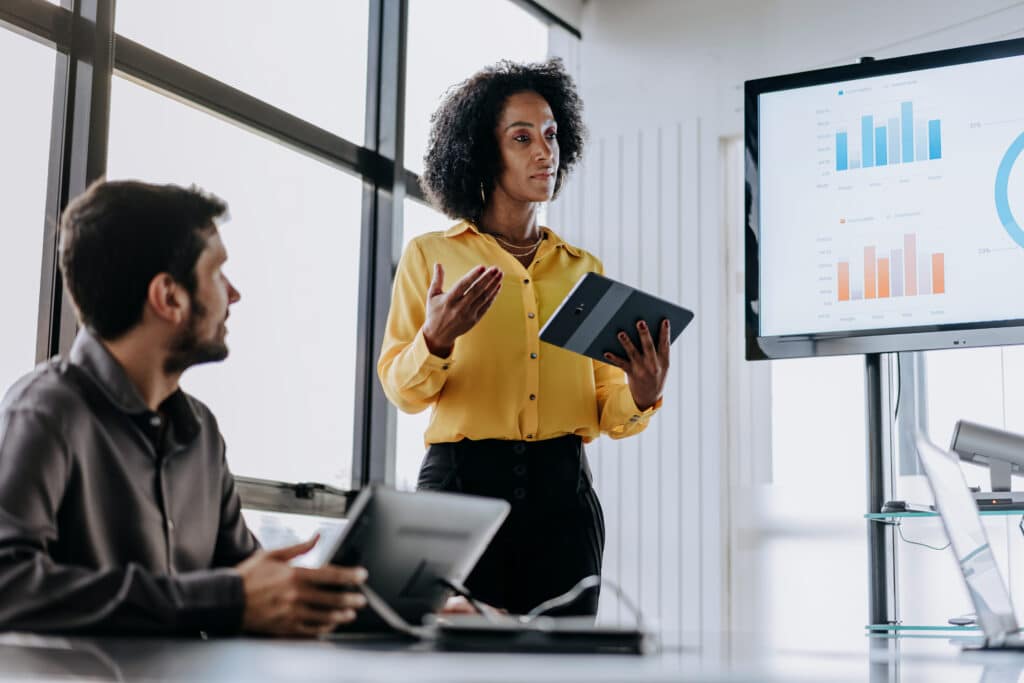Featured in: The Grocer
AI adoption in agriculture is increasing, but it’s not uniform and still in its early stages. In this article we discuss how the agriculture sector is leveraging AI, the barriers farmers face in adoption these new technologies, and how they can be overcome. Here’s a closer look at AI adoption trends in farming, the challenges holding some businesses back, and practical ways to get started.
1. How are farmers and agricultural businesses embracing AI right now?
Large-scale agribusinesses are investing in AI-powered robotics, predictive analytics, and automated monitoring systems, while smaller farms are more hesitant due to cost, complexity and weak ROI.
- Large agricultural firms are leading the way, investing in AI-driven robotics, predictive analytics, and automated monitoring systems. For example, some UK wheat farms now use AI-powered combines that adjust grain separation in real time, reducing crop loss by up to 5%
- Mid-sized farms are integrating AI-powered precision agriculture tools, such as satellite imagery combined with AI models to optimise fertiliser and irrigation use. In the Netherlands, dairy farms use AI-driven sensors to monitor cow health, detecting early signs of illness, reducing antibiotic use and increasing yield
- Smaller farms remain more cautious, mainly due to cost and complexity. However, AI is reaching them in more accessible ways. For instance, in Africa and India, farmers use AI-driven mobile apps to diagnose crop diseases by simply taking a photo —leveraging AI trained on millions of images
Adoption is steadily growing, but many farmers—particularly in traditional farming cultures —need clear proof of AI’s value before fully trusting automated recommendations.
2. What are the primary use cases and what benefits are farmers seeing?
Although AI can introduce automation, its real power lies in enhancing data-led decision-making. These use cases are demonstrating the highest added value:
- Food quality control and grain processing: AI-powered vision systems now inspect crops, sorting based on size, colour, and moisture content. This improves product consistency for customers and can also support with planning packhouses
- Product quality: Livestock farmers are using probes to measure intramuscular fat in carcasses just after slaughter. When combining these data with AI analytics, farmers gain a clear view of their animal quality and any trends. This allows farmers to make better decisions to improve their product quality going forwards — for example changes to breeding, feeding and general livestock management
- Yield prediction and market pricing: AI models analyse weather patterns, soil health, and historical yield data to forecast harvest volumes. Some UK farms now use AI-driven models to assess wheat moisture levels and protein content, helping set pricing before milling even begins
- Precision spraying and herbicide reduction: AI-powered sprayers like John Deere’s “see and spray” system use computer vision to differentiate between crops and weeds, cutting herbicide use by up to 90%, which is significantly reducing costs and environmental impact
- Livestock health monitoring: Dairy farms now use AI-driven ear tags and vision systems to track cow movement, feeding behaviour, and temperature, identifying potential illnesses before symptoms appear. This reduces losses and improves animal welfare
- Supply chain and logistics optimisation: AI models help grain cooperatives analyse humidity, transport time, and storage conditions to ensure wheat remains at optimal quality during transport
3. AI Adoption: Balancing risks and rewards for smallholder farmers
Among smaller and mid-sized farms, there remains hesitation towards incorporating AI into agriculture due to:
- Trust and explainability: AI models sometimes produce unexpected recommendations. For example, an AI driven yield forecasting model trained on dry weather conditions might suggest reducing fertiliser application during an unusually wet season, but without a clear explanation, many farmers will default to their instincts over AI-generated advice
- Cost and return on investment (ROI) concerns: AI-powered equipment, such as autonomous tractors or robotic harvesters, requires significant upfront investment, which many farmers cannot justify without clear evidence of long-term savings
- AI struggling with real-world variability: Many supervised learning models are trained under controlled conditions. If an AI model learns to detect wheat defects under specific moisture levels, it may fail in a season with unexpected rainfall or humidity spikes. These unpredictable failures reinforce scepticism about AI reliability
- Infrastructure barriers: AI often depends on broadband connectivity, cloud computing, and large datasets, which are not always available in rural farming regions
Farmers tend to stick with proven methods because AI models still struggle to adapt to shifting climate patterns, variable crop conditions, and changing supply chain disruptions.
4. What are some of the practical challenges to adoption?
Despite the potential benefits of AI in agriculture, various practical challenges hinder its widespread adoption among farmers:
- Funding and affordability: Most AI-powered farm equipment remains too expensive for smallholders. Many are turning to leasing models and cooperative ownership to access AI-driven tools without major capital outlay
- Data availability and quality: AI models rely on structured, high-quality data, yet many farms lack digital records. For instance, an AI-driven grain quality assessment model needs historical data on protein content and moisture levels, but many farmers do not systematically collect or store this information
- Connectivity issues: Rural farms often lack high-speed internet, making cloud-based AI tools impractical. To address this, edge AI solutions — where AI models run locally on a device rather than relying on cloud connectivity — are emerging as a viable alternative
5. What are the safest and most affordable ways for farmers to experiment with AI?
AI in agriculture isn’t about replacing farmers, it’s about giving them better tools to optimise decision-making. However, for AI adoption to accelerate, it needs to be affordable, explainable and reliable (accounting for real-world variability), and it must be integrated with existing farming practices.
Farmers will adopt AI when it proves its worth through practical, tangible benefits, rather than promising a technological revolution that doesn’t account for the complexities of real-world farming. The best approach is to start small, test AI tools in low-risk areas, and ensure they complement existing farm operations.
Here’s how farmers can experiment with AI in a safe and cost-effective way:
- Start small: AI adoption doesn’t require a large upfront investment. Farmers can begin with AI-driven mobile apps like Climate FieldView or Xarvio, which provide real-time crop health insights using satellite data, no extra hardware needed
- Use AI for market forecasting: AI-powered tools can predict price fluctuations, helping farmers sell at the best time. Platforms like Farmers Business Network now provide AI-driven price forecasts, enabling data-driven selling strategies
- Explore government and industry grants: The UK’s Farming Innovation Programme and EU CAP funding provide financial support for AI adoption in precision agriculture
- Leverage co-op and shared AI models: Some farming cooperatives share AI-powered drones and automated monitoring systems to reduce individual costs while still benefiting from the technology
- Test before you buy: Many AI providers now offer pay-as-you-go models or pilot programmes. Some grain cooperatives now rent AI-powered drone services for crop monitoring, allowing farmers to trial AI before committing to full-scale adoption
- Invest in AI that works with existing equipment: Instead of replacing machinery, farmers should look for AI tools that integrate with current equipment. Companies like Trimble and John Deere now offer AI retrofitting solutions for older tractors, making AI adoption more gradual and affordable
- Use Edge AI to avoid connectivity issues: Some AI-driven irrigation and pest control systems now run on localised hardware, meaning they do not require an internet connection, making them more viable for remote farms
While there is hesitation amongst some for the adoption of AI in agriculture, there is growing acceptance that it could secure a resilient and prosperous future for the agricultural industry. By taking small, strategic steps, farmers can integrate AI into their operations without unnecessary financial risk, ensuring that AI works for them rather than the other way around.
Authors: James Watson and Mohib Rahmani







